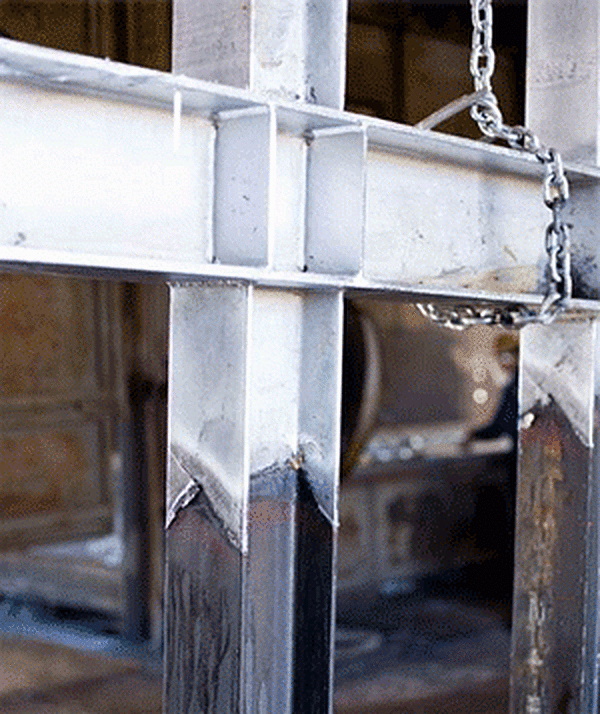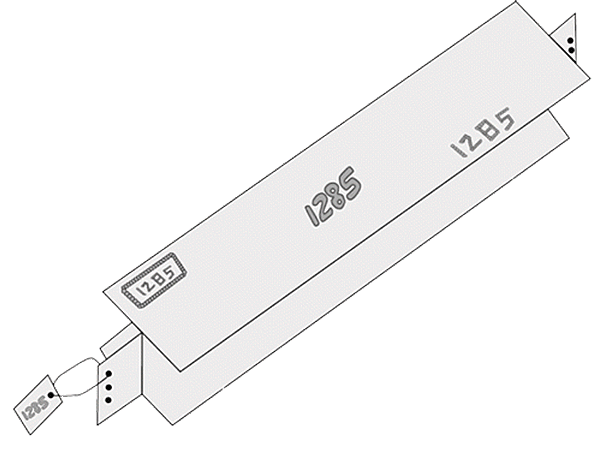Additional Design Considerations
There are a few other considerations to take into account when designing for hot-dip galvanizing namely marking and masking.
Masking

During the galvanizing process, all surfaces are cleaned and coated with zinc. For some purposes, intentionally ungalvanized areas, such as threads, areas to be welded, and studs, are required. Masking, treating a portion of the steel surface so the area remains ungalvanized, may be performed to accomplish this. Masking is not an exact science; thus, additional work may still be required to remove unwanted zinc. In most cases, it may be easier to grind off the zinc coating after galvanizing than to mask the material because masking is not 100% effective and can add significant labor time.
There are four major categories of masking materials:
- Acid-resistant, high-temperature tapes
- Water-based pastes and paint-on formulations
- Resin-based, high-temperature paints
- High-temperature greases and thread compounds
The AGA has completed a study evaluating the effectiveness of various common products as masking materials. This information is available by contacting the AGA Technical Department.
Marking

Identification markings on fabricated items should be carefully prepared before galvanizing so they will be legible after galvanizing, but not disrupt the zinc coatings integrity. Cleaning solutions used in the galvanizing process will not remove oil-based paints, crayon markers or oil-based markers, so these products should not be used for applying addresses, shipping instructions, or job numbers. If these products are used, ungalvanized area may result.
Detachable metal tags or water-soluble markers should be specified for temporary identification. Alternatively, barcode tags are manufactured to survive the hot-dip galvanizing process and easily maintain identification. Where permanent identification is needed, there are three suitable alternatives for marking steel fabrications to be hot-dip galvanized. Each enables items to be rapidly identified after galvanizing and at the job site.
Stamp the surface of the item using die-cut deep stencils or a series of center punch-marks. These marks should be placed in a standard position on each of the members, preferably toward the center. They should be a minimum of 1/2" (13 mm) high and 1/32" (0.8 mm) deep to ensure readability after galvanizing. This method should not be used to mark fracture-critical members. A series of weld beads may also be used to mark letters or numbers directly onto the fabrication. It is essential that all welding flux be removed in order to achieve a quality galvanized coating.
Deep stenciling a steel tag (minimum #12 gauge) and firmly affixing it to the fabrication with a minimum #9 gauge steel wire is another option for identification. The tag should be wired loosely to the work so that the area beneath the wire can be galvanized and the wire will not freeze to the work when the molten zinc solidifies. If desired, tags may be seal-welded directly to the material.
Hot-Dip Galvanized AESS

There is a common misconception it's not possible to obtain hot-dip galvanizing of the quality and aesthetics required for architecturally exposed structural steel (AESS) projects. However, it is important to understand the requirements in ASTM A123 are not written to maximize appearance. The specification is written to ensure the galvanized coating provides the expected corrosion resistance for its intended use.
So, when working on an AESS project, it is important to understand what is and is not required to meet ASTM A123. Then, it may be necessary to include additional detailing using the Custom Category Matrix for the fabricator to follow. It is highly recommended to have a pre-job meeting with all parties (GC/Fabricator/Galvanizer) and to explicitly state responsibility for any additional detailing/work to improve the appearance.
The AGA is currently working on a supplemental guide to help specifiers understand what fabrication practices will improve the final appearance of the hot-dip galvanized coating.